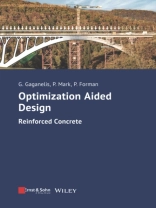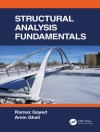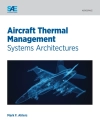Optimization Aided Design provides novel methods to use reinforced concrete in a particularly efficient way. Mathematical optimization is applied to the practical problems of concrete design. The aim is to employ the world’s most widely used building material in the most economical way and thus substantially reduce CO2 emissions from cement and steel production as well as resource consumption of gravel, sand and water.
Three topics are addressed. First, the identification of the structure. This means the question of the right outer shape such that slender load-bearing designs develop following the flux of forces. In line with the stress affinity of the material, the structures are predominantly subjected to compression. Second, the reinforcement layout, which is oriented to the stress trajectories. Advantages arise particularly for walls, voluminous structural components, load introduction areas and cut-outs. Clear strut-and-tie models emerge that are directly convertible into reinforcement layouts. Third, the treatment of cross-sections. They are optimized in their shape and designed in their reinforcement. This also applies to sophisticated loading conditions (biaxial bending) and virtually arbitrary geometrical configurations. Parameterization allows the transfer to general cross-section types.
The optimization aided methods are described extensively and in an illustrative manner. They are universally applicable and independent of standards, concrete types and reinforcements. They apply to normal strength to ultra-high performance concretes, to reinforcements made of steel, carbon or glass fibers, and to rebars as well as reinforcing fibers. Numerous illustrations and computation examples demonstrate their application. Moreover, practical applications are presented, including ultra-light concrete-steel beams, slender concrete solar collectors, and improved reinforcement layouts for tunnel lining. The book addresses students, researchers, and practitioners alike.
Jadual kandungan
Foreword by Manfred Curbach
Foreword by Werner Sobek
Preface
Acknowledgments
Acronyms
1 INTRODUCTION
2 FUNDAMENTALS OF REINFORCED CONCRETE DESIGN
2.1 Basic Principles
2.2. Verification Concept
2.3 Safety Concept
2.4 Materials
2.5 Load-bearing Behavior
3 FUNDAMENTALS OF STRUCTURAL OPTIMIZATION
3.1 Structural Optimization Approaches
3.2 Problem Statement
3.3 Lagrange Function
3.4 Sensitivity Analysis
3.5 Solution Methods
4 IDENTIFICATION OF STRUCTURES
4.1 One-material Structures
4.2 One-material Stress-biased Structures
4.3 Bi-material Structures
4.4 Examples
4.5 Applications
5 INTERNAL FORCE FLOW
5.1 Preliminaries
5.2 Continuum Topology Optimization (CTO) Approach
5.3 Truss Topology Optimization (TTO) Approach
5.4 Continuum-Truss Topology Optimization (CTTO) Approach
5.5 Examples
5.6 Applications
6 DESIGN OF CROSS-SECTIONS
6.1 Problem Statement
6.2 Equilibrium Iteration
6.3 Sectional Optimization
6.4 Solving
6.5 Parameterization
6.6 Examples
BIBLIOGRAPHY
LIST OF EXAMPLES
Variation of volume fraction
Variation of the filter radius
Variation of material parameters
Form finding of bridge pylons 1
Form finding of bridge pylons 2
Conceptual bridge design 1
Conceptual bridge design 2
Multi-span girder
Multiple load cases
Two load cases
Material steering
Material variation in bi-material design
Filter radius with bi-material design
Bi-material multi-span girder
Bi-material girder with stepped support
Bi-material arch bridge
Deep beam 1
Wall with block-outs
Corbel
Cantilever beam
Shear transfer at joints
Deep beam 2
Frame corner
Wall with eccentric block-out
Corbel with horizontal force
Stiening core with openings
Deep beam 3
Deep beam 4
Deep beam 5
Strain plane of an unsymmetric RC section
Footing with gapping joint
Parameterized T-section
Parameterized uniaxial bending
Shape design of a RC I-section
Shape optimization of a footing
Mengenai Pengarang
Georgios Gaganelis ist Planungsingenieur für Ingenieurbauwerke und freiberuflicher Berater im Bereich der Strukturoptimierung. Seine Promotion erhielt er 2020 an der Ruhr-Universität Bochum mit einer Arbeit über Optimierungsstrategien für Beton- und Stahl-Beton-Verbundtragwerke. Seine Forschungsinteressen liegen in der topologischen Optimierung und der baustoffgerechten Steuerung der Formfindung. Ein Schwerpunkt liegt auf ultra-leichten Konstruktionen, die mit minimalen Materialmengen auskommen.
Peter Mark ist Universitätsprofessor für Massivbau an der Ruhr-Universität in Bochum. Er forscht auf den Gebieten der angewandten Optimierungsmethoden und des Betonleichtbaus seit 20 Jahren. Er promovierte 1994 und habilitierte sich 2006. Er ist Beratender Ingenieur und Prüfingenieur für Baustatik seit 2008 und maßgeblich beteiligt an zahlreichen Projekten des Brücken-, Tunnel- und Hochbaus.
Patrick Forman ist Oberingenieur am Lehrstuhl für Massivbau an der Ruhr-Universität Bochum. Seine Promotion schloss er 2016 ab. Seit über 10 Jahren forscht er zu leichten Schalen und Stabstrukturen aus Hochleistungsmaterialien mit verschiedenartigen Optimierungsmethoden. Aktuell ist er Geschäftsführer und technischer Leiter eines interdisziplinären Großforschungsprogramms zu adaptiven Modulbauweisen.












